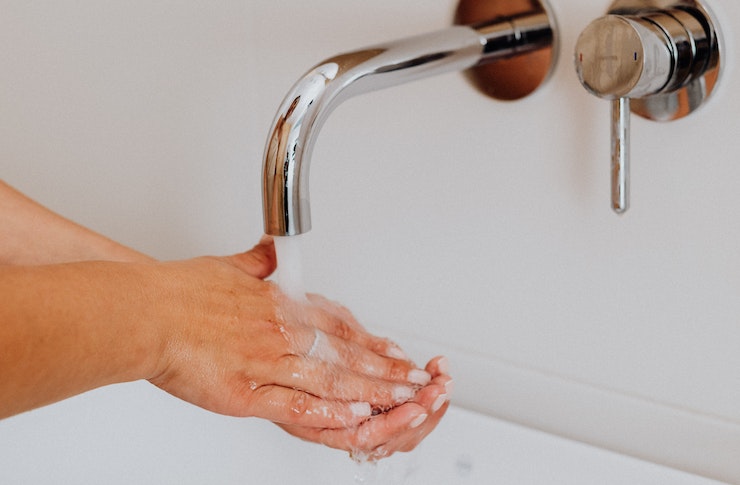Practical Guide to Modern Personal Cleansing Fixtures
Modern personal cleansing fixtures—including toilet seats and bidet attachments—focus on hygiene, comfort, and efficiency. This short overview highlights key considerations for installation, routine maintenance, retrofit options, nozzle care, water saving measures, smart bathroom features, and drying methods to help readers make informed choices for home or commercial bathrooms.

Modern personal cleansing fixtures combine traditional toilet function with targeted cleansing features designed to improve hygiene and comfort. This guide covers practical aspects of sanitation-focused fittings, clear steps for installation, routine maintenance needs, retrofit possibilities for existing toilets, proper nozzle care, water saving technologies, smart bathroom integrations, and drying options. The goal is to provide straightforward, verifiable guidance for homeowners, facility managers, and plumbing professionals considering or maintaining these fixtures.
This article is for informational purposes only and should not be considered medical advice. Please consult a qualified healthcare professional for personalized guidance and treatment.
Hygiene and sanitation
Effective hygiene is the main reason many people add built-in or add-on cleansing fixtures. Water-based cleansing can reduce reliance on paper products and may lower irritation for some users. Look for models with adjustable spray patterns, self-rinsing or removable nozzles, and nonporous materials that resist bacterial growth. Smooth surfaces and minimal seams make daily cleaning simpler. Good bathroom ventilation and routine surface disinfection also play important roles in maintaining an overall sanitary environment.
Installation and pressure considerations
Proper installation impacts performance and safety. Basic bidet seats and attachments typically require a standard cold-water connection and stable mounting; advanced units may need an electrical outlet for heated seats, pumps, or dryers. Water pressure affects spray effectiveness: insufficient pressure can reduce cleansing efficiency, while excess pressure can be uncomfortable. Many fixtures include pressure controls or regulators. Before installation, check local services and plumbing codes in your area and consider hiring a licensed plumber for complex connections or electrical work.
Maintenance and nozzles care
Regular maintenance keeps fixtures hygienic and long-lasting. Inspect nozzles periodically for mineral buildup and wipe them with mild cleaners; removable nozzles simplify deeper cleaning. Replace old hoses, seals, and filters according to manufacturer guidance to prevent leaks or contamination. Avoid harsh abrasives that can damage coatings or seals. Schedule an annual inspection of mounting hardware and water connections. Consistent maintenance helps ensure reliable cleansing performance and reduces the risk of unexpected repairs.
Retrofit options and local services
Retrofitting a cleansing seat or attachment is a common, cost-conscious upgrade for existing toilets. Options include clip-on bidet attachments, full-seat replacements, and handheld sprayers. Compatibility depends on bowl shape and seat mounting; check dimensions before purchase. Local services such as licensed plumbers or bathroom remodelers can advise on compatibility, code compliance, and professional installation. For DIY installations, follow manufacturer instructions carefully and consult local services if electrical outlets or water pressure adjustments are required.
Water saving and smart bathroom features
Water efficiency is increasingly important in fixture selection. Adjustable flow settings, timed sprays, and pulse modes can limit water use while maintaining cleaning performance. Some models offer smart bathroom features—user presets, temperature control, and connectivity for home automation—that enhance convenience but may add energy use for heated components. When choosing options, weigh potential energy consumption against water saving benefits. Look for efficient valves and product specifications that document reduced water consumption for sustainable choices.
Cleansing, comfort, and drying
User comfort depends on adjustable spray angle, pressure, and temperature control. Multiple user presets or position-adjustable nozzles accommodate varied preferences. Spray types such as oscillating or aerated streams can improve coverage with gentler pressure. Drying options include integrated air dryers or the continued use of paper; dryers reduce paper dependence but increase energy use and may require longer drying times. Selecting fixtures with quick-drying materials and antimicrobial surfaces can balance comfort with sanitation.
Conclusion Modern personal cleansing fixtures offer measurable benefits in sanitation, comfort, and water efficiency when selected and maintained with care. Prioritize compatibility with existing plumbing and electrical systems during installation, follow recommended maintenance for nozzle care and seals, and evaluate retrofit choices and smart features based on local services and sustainability goals. Thoughtful selection and routine upkeep will help these fixtures perform reliably and contribute to a cleaner bathroom experience.






